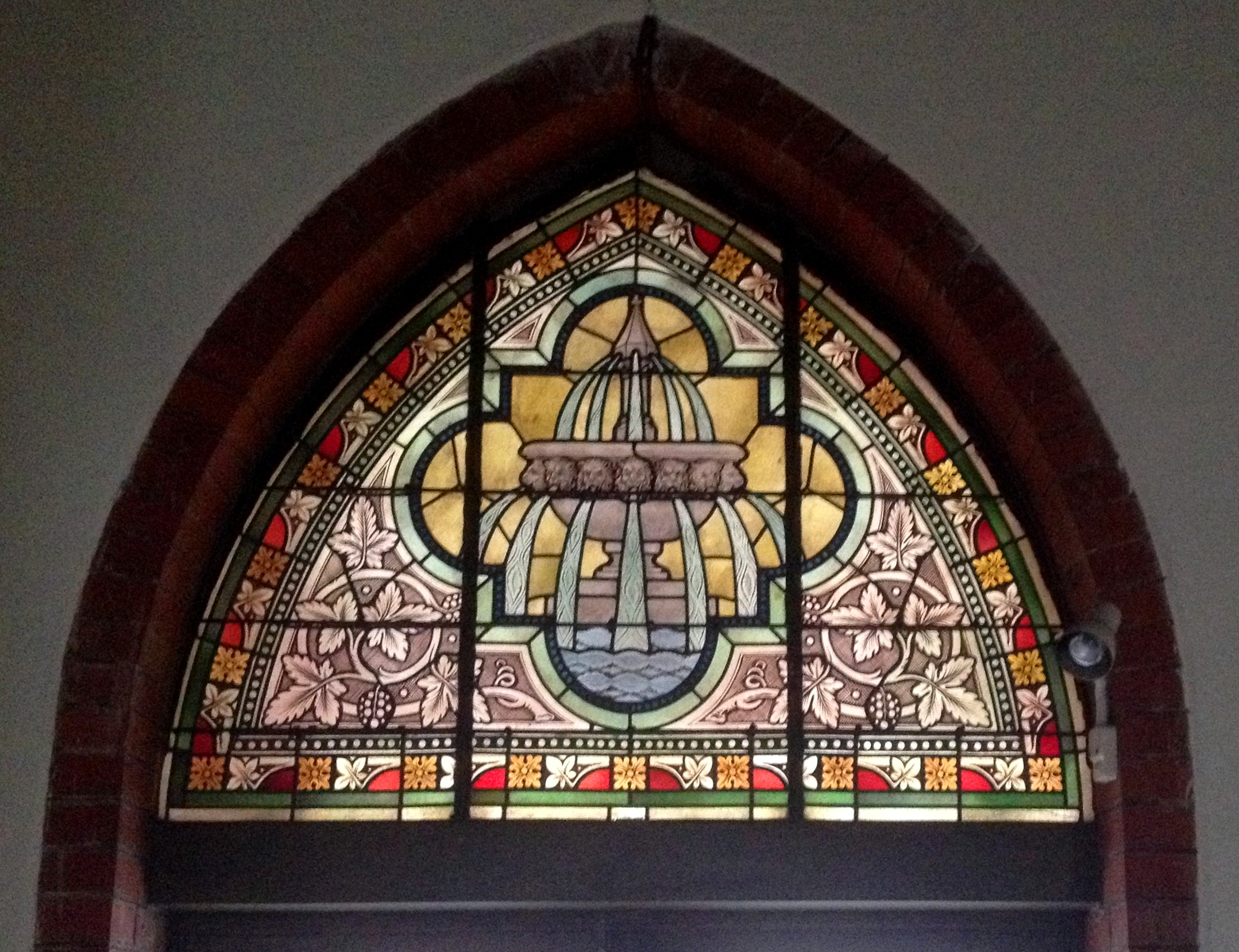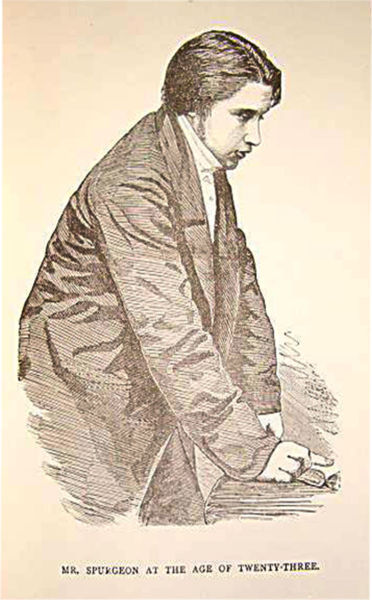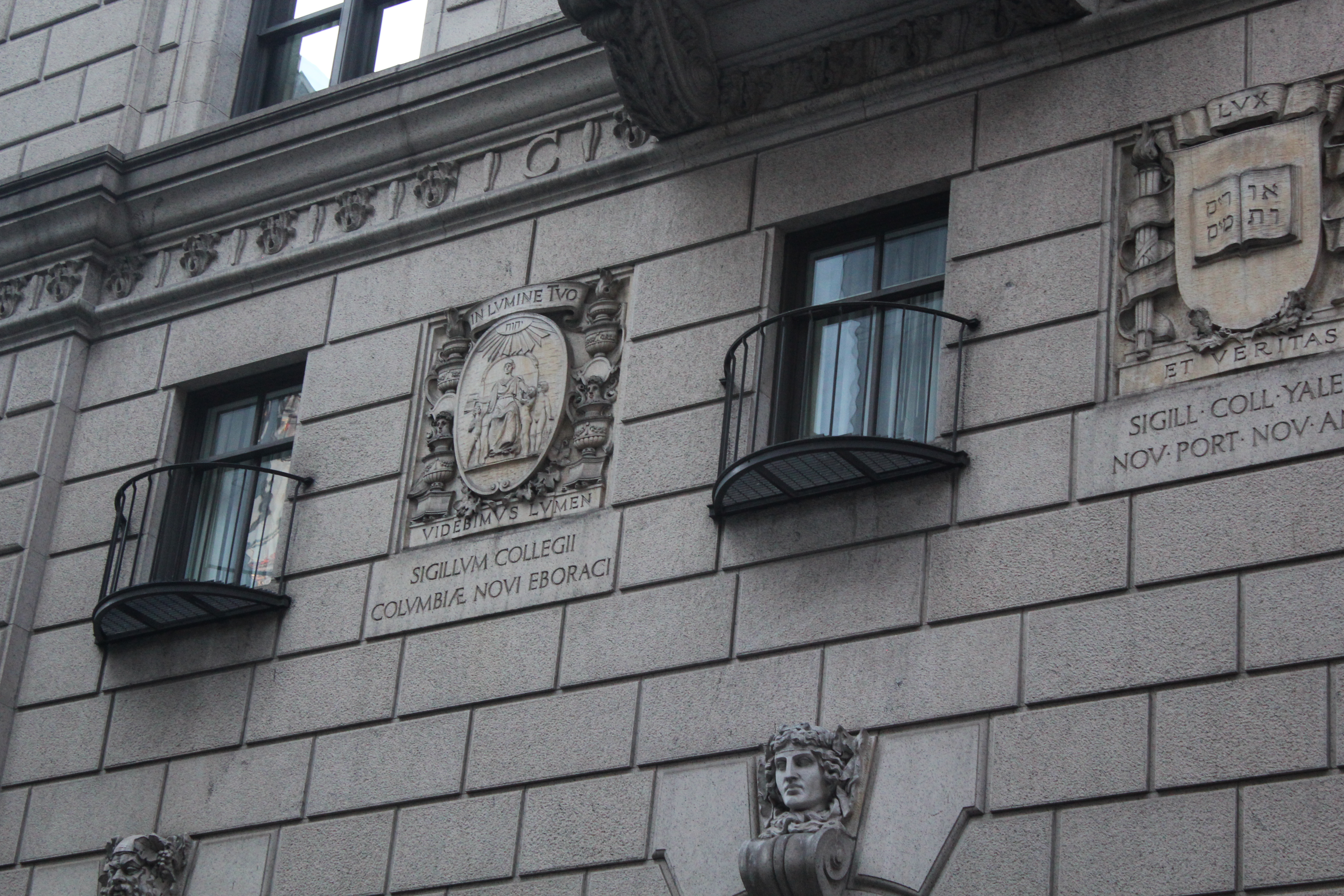|
Psalm 36
Psalm 36 is the 36th psalm of the Book of Psalms, beginning in English in the King James Version: "The transgression of the wicked saith within my heart". The Book of Psalms is part of the third section of the Hebrew Bible, and a book of the Christian Old Testament. In the slightly different numbering system used in the Greek Septuagint and Latin Vulgate translations of the Bible, this psalm is Psalm 35. In Latin, it is known as Dixit iniustus or Dixit injustus. The psalm is a hymn psalm, attributed to David. The psalm forms a regular part of Jewish, Catholic, Lutheran, Anglican and other Protestant liturgies. It has inspired hymns based on it, and has often been set to music, by Baroque composers such as Heinrich Schütz as well as contemporary composers such as Richard Nance. Parts of this psalm have been singled out, for example "In Thy light shall we see light" (in Latin: "In lumine Tuo videbimus lumen") which is the motto of Columbia University, and which appears on its u ... [...More Info...] [...Related Items...] OR: [Wikipedia] [Google] [Baidu] |
Psalms
The Book of Psalms ( or ; he, תְּהִלִּים, , lit. "praises"), also known as the Psalms, or the Psalter, is the first book of the ("Writings"), the third section of the Tanakh, and a book of the Old Testament. The title is derived from the Greek translation, (), meaning "instrumental music" and, by extension, "the words accompanying the music". The book is an anthology of individual Hebrew religious hymns, with 150 in the Jewish and Western Christian tradition and more in the Eastern Christian churches. Many are linked to the name of David, but modern mainstream scholarship rejects his authorship, instead attributing the composition of the psalms to various authors writing between the 9th and 5th centuries BC. In the Quran, the Arabic word ‘Zabur’ is used for the Psalms of David in the Hebrew Bible. Structure Benedictions The Book of Psalms is divided into five sections, each closing with a doxology (i.e., a benediction). These divisions were probably intro ... [...More Info...] [...Related Items...] OR: [Wikipedia] [Google] [Baidu] |
Hymns And Musical Settings
A hymn is a type of song, and partially synonymous with devotional song, specifically written for the purpose of adoration or prayer, and typically addressed to a deity or deities, or to a prominent figure or personification. The word ''hymn'' derives from Greek (''hymnos''), which means "a song of praise". A writer of hymns is known as a hymnist. The singing or composition of hymns is called hymnody. Collections of hymns are known as hymnals or hymn books. Hymns may or may not include instrumental accompaniment. Although most familiar to speakers of English in the context of Christianity, hymns are also a fixture of other world religions, especially on the Indian subcontinent (''stotras''). Hymns also survive from antiquity, especially from Egyptian and Greek cultures. Some of the oldest surviving examples of notated music are hymns with Greek texts. Origins Ancient Eastern hymns include the Egyptian ''Great Hymn to the Aten'', composed by Pharaoh Akhenaten; the Hurrian ''Hym ... [...More Info...] [...Related Items...] OR: [Wikipedia] [Google] [Baidu] |
Jerome
Jerome (; la, Eusebius Sophronius Hieronymus; grc-gre, Εὐσέβιος Σωφρόνιος Ἱερώνυμος; – 30 September 420), also known as Jerome of Stridon, was a Christian presbyter, priest, Confessor of the Faith, confessor, theologian, and historian; he is commonly known as Saint Jerome. Jerome was born at Stridon, a village near Emona on the border of Dalmatia (Roman province), Dalmatia and Pannonia. He is best known for his translation of the Bible into Latin (the translation that became known as the Vulgate) and his commentaries on the whole Bible. Jerome attempted to create a translation of the Old Testament based on a Hebrew version, rather than the Septuagint, as Vetus Latina, Latin Bible translations used to be performed before him. His list of writings is extensive, and beside his biblical works, he wrote polemical and historical essays, always from a theologian's perspective. Jerome was known for his teachings on Christian moral life, especially to th ... [...More Info...] [...Related Items...] OR: [Wikipedia] [Google] [Baidu] |
Syriac Versions Of The Bible
Syriac is a dialect of Aramaic. Portions of the Old Testament were written in Aramaic and there are Aramaic phrases in the New Testament. Syriac translations of the New Testament were among the first and date from the 2nd century. The whole Bible was translated by the 5th century. Besides Syriac, there are Bible translations into other Aramaic dialects. Syria played an important or even predominant role in the beginning of Christianity. Here is where the Gospel of Matthew, the Gospel of Luke, the Didache, Ignatiana, and the Gospel of Thomas are believed to have been written. Syria was the country in which the Greek language intersected with the Syriac, which was closely related to the Aramaic dialect used by Jesus and the Apostles. That is why Syriac versions are highly esteemed by textual critics. Scholars have distinguished five or six different Syriac versions of all or part of the New Testament. It is possible that some translations have been lost. The manuscripts originate i ... [...More Info...] [...Related Items...] OR: [Wikipedia] [Google] [Baidu] |
Alexander Kirkpatrick
Alexander Francis Kirkpatrick (25 June 1849 – 22 January 1940) was Regius Professor of Hebrew at Cambridge University (1882–1903) and the third Master of Selwyn College, Cambridge (1898–1907). Life Kirkpatrick was born at Lewes, East Sussex, only son (with three daughters) of Rev. Francis Kirkpatrick, and was educated at Haileybury and Trinity College, Cambridge. He also served as Canon of Ely (1882–1903), Dean of Ely (1906 -1936), Examining Chaplain to the Bishop of Winchester (1895–1903) and General Editor for Old Testament and Apocrypha of the Cambridge Bible for Schools and Colleges (1892–1929), to which he contributed the commentaries on 1 and 2 Samuel and the Psalms. In his introduction to the book of Psalms, he observed that "they repeat the whispers of the Spirit of God, they reflect the very light of the Eternal Wisdom". In 1884, Kirkpatrick married Julia Mary (1858-1943), daughter of Rev. J. Pemberton Bartlett, rector of Exbury Exbury is a villag ... [...More Info...] [...Related Items...] OR: [Wikipedia] [Google] [Baidu] |
Douay–Rheims Bible
The Douay–Rheims Bible (, ), also known as the Douay–Rheims Version, Rheims–Douai Bible or Douai Bible, and abbreviated as D–R, DRB, and DRV, is a translation of the Bible from the Latin Vulgate into English made by members of the English College, Douai, in the service of the Catholic Church. The New Testament portion was published in Reims, France, in 1582, in one volume with extensive commentary and notes. The Old Testament portion was published in two volumes twenty-seven years later in 1609 and 1610 by the University of Douai. The first volume, covering Genesis through Job, was published in 1609; the second, covering Psalms to 2 Maccabees (spelled "Machabees") plus the three apocrypha books of the Vulgate appendix following the Old Testament (Prayer of Manasseh, 3 Esdras, and 4 Esdras) was published in 1610. Marginal notes took up the bulk of the volumes and had a strong polemical and patristic character. They offered insights on issues of translatio ... [...More Info...] [...Related Items...] OR: [Wikipedia] [Google] [Baidu] |
Richard Challoner
Richard Challoner (29 September 1691 – 12 January 1781) was an English Roman Catholic bishop, a leading figure of English Catholicism during the greater part of the 18th century. The titular Bishop of Doberus, he is perhaps most famous for his revision of the Douay–Rheims translation of the Bible. Early life Challoner was born in Lewes, Sussex, on 29 September 1691. His father, also Richard Challoner, was married by licence granted on 17 January, either 1690 or 1691, to Grace (née Willard) at Ringmer, Sussex, on 10 February. After the death of his father, who was a Presbyterian winecooper (wine-barrel maker), his mother, now reduced to poverty, became housekeeper to the Catholic Gage family, at Firle, Sussex. It is not known for sure whether she was originally a Roman Catholic, or whether she subsequently became one under the influence of a Catholic household and surroundings. In any case, thus it came about that Richard was brought up as a Catholic, although he was no ... [...More Info...] [...Related Items...] OR: [Wikipedia] [Google] [Baidu] |
Absalom
Absalom ( he, ''ʾAḇšālōm'', "father of peace") was the third son of David, King of Israel with Maacah, daughter of Talmai, King of Geshur. 2 Samuel 14:25 describes him as the handsomest man in the kingdom. Absalom eventually rebelled against his father and was killed during the Battle of Ephraim's Wood. Biblical account Background Absalom, David's third son, by Maacah, was born in Hebron. At an early age, he moved, along with the transfer of the capital, to Jerusalem, where he spent most of his life. He was a great favorite of his father and of the people. His charming manners, personal beauty, insinuating ways, love of pomp, and royal pretensions captivated the hearts of the people from the beginning. He lived in great style, drove in a magnificent chariot, and had fifty men run before him. Little is known of Absalom's family life, but the biblical narrative states that he had three sons and one daughter, Tamar, who is described as a beautiful woman. From the language ... [...More Info...] [...Related Items...] OR: [Wikipedia] [Google] [Baidu] |
Saul
Saul (; he, , ; , ; ) was, according to the Hebrew Bible, the first monarch of the United Kingdom of Israel. His reign, traditionally placed in the late 11th century BCE, supposedly marked the transition of Israel and Judah from a scattered tribal society to organized statehood. The historicity of Saul and the United Kingdom of Israel is not universally accepted, as what is known of both comes from the Hebrew Bible. According to the text, he was anointed as king of the Israelites by Samuel, and reigned from Gibeah. Saul is said to have died by suicide when he "fell on his sword" during a battle with the Philistines at Mount Gilboa, in which three of his sons were also killed. The succession to his throne was contested between Ish-bosheth, his only surviving son, and David, his son-in-law; David ultimately prevailed and assumed kingship over Israel and Judah. Biblical account The biblical accounts of Saul's life are found in the Books of Samuel: House of King Saul According t ... [...More Info...] [...Related Items...] OR: [Wikipedia] [Google] [Baidu] |
Matthew Henry
Matthew Henry (18 October 166222 June 1714) was a Nonconformist (Protestantism), Nonconformist minister and author, who was born in Wales but spent much of his life in England. He is best known for the six-volume biblical commentary ''Exposition of the Old and New Testaments''. Life Matthew Henry was the second son born to Philip and Kathrine Henry. He was born prematurely at his mother's family estate, Broad Oak, a farmhouse Welsh Marches, on the borders of Flintshire and Shropshire. He was Infant baptism, baptized the next day by the local parish Rector (ecclesiastical), rector. His father, Philip Henry, a Church of England cleric, had just been Great Ejection, ejected under the Act of Uniformity 1662. As a young child, he was frequently afflicted with fevers. Unlike most of those who had been ejected, Philip Henry possessed some private means, and was able to provide his son a good education. Henry's sister was diarist Sarah Savage. Early life By the age of nine, Henry wa ... [...More Info...] [...Related Items...] OR: [Wikipedia] [Google] [Baidu] |
Charles Spurgeon
Charles Haddon Spurgeon (19 June 1834 – 31 January 1892) was an English Particular Baptist preacher. Spurgeon remains highly influential among Christians of various denominations, among whom he is known as the "Prince of Preachers". He was a strong figure in the Reformed Baptist tradition, defending the 1689 London Baptist Confession of Faith, and opposing the liberal and pragmatic theological tendencies in the Church of his day. Spurgeon was pastor of the congregation of the New Park Street Chapel (later the Metropolitan Tabernacle) in London for 38 years. He was part of several controversies with the Baptist Union of Great Britain and later he left the denomination over doctrinal convictions. While at the Metropolitan Tabernacle he built an Almshouse, the Stockwell Orphanage and encouraged his congregation to engage actively with the poor of Victorian London. He also founded Spurgeon's College, which was named after him posthumously. Spurgeon authored sermons, an auto ... [...More Info...] [...Related Items...] OR: [Wikipedia] [Google] [Baidu] |
Heraldry Of Columbia University
Columbia University represents itself using several symbols, including a university seal and a coat of arms. The seal was first adopted in 1755, shortly after the university's founding, and with few variations continues to be used today. The Columbia shield was adopted in 1949. Additionally, the individual schools of Columbia possess their own logos, most of which contain some variant on the King's Crown symbol. Exceptions to this rule include the Columbia University Vagelos College of Physicians and Surgeons, College of Physicians and Surgeons, which in addition to a logo adopted a variant of the university seal, and the Columbia University School of General Studies, School of General Studies, which inaugurated its own coat of arms based on the Columbia shield in 1950. The King's Crown is one of the most popular and pervasive symbols of the university, and is currently used as the school's official logo. It traces its roots back to a copper crown that once surmounted Columbia's fi ... [...More Info...] [...Related Items...] OR: [Wikipedia] [Google] [Baidu] |










